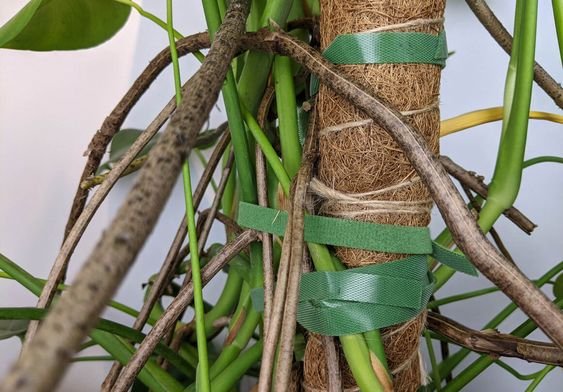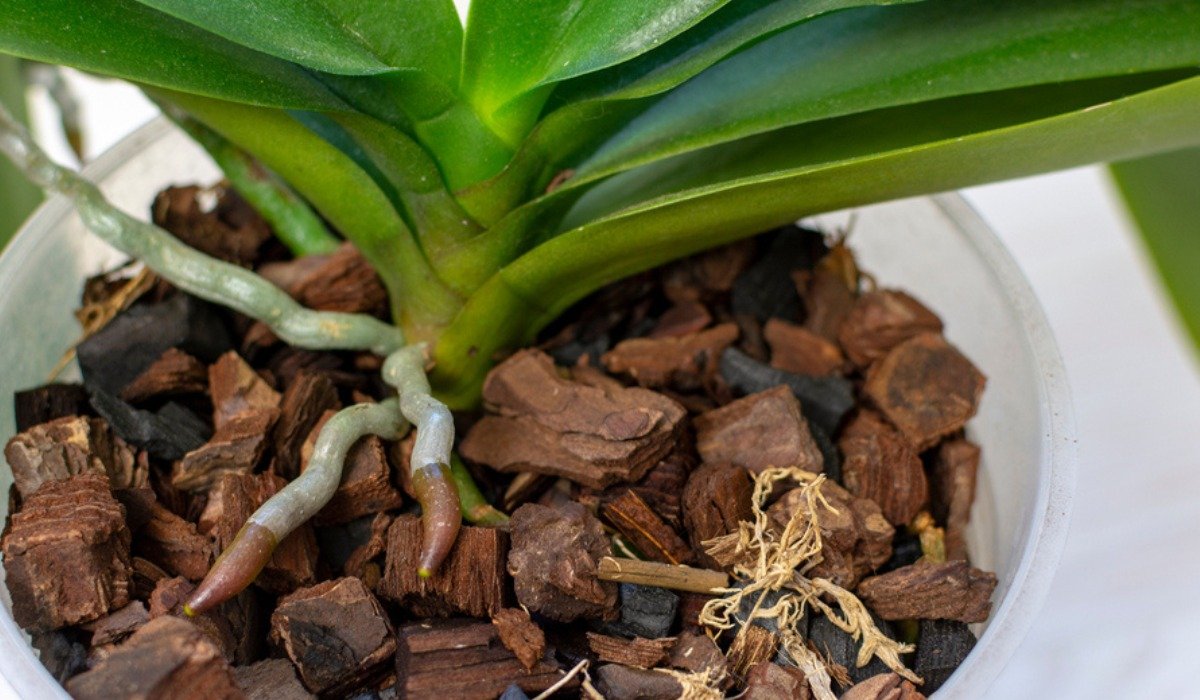The roots that grow on a plant’s above-ground parts are known as aerial roots. The aerial roots of woody vines serve as anchors to secure the plant to trellises, rocks, and other supports. Some types of aerial roots can absorb nutrients and moisture, just like deep roots can.
Although they have underground roots, bog and marsh plants are unable to take gases from the atmosphere. To aid in air exchange, some plants grow “breathing roots” above ground.
See also about: different types of leaves with names

Source: Pinterest
Aerial roots: Characteristics
Aerial roots are found in many plants. They can be classed into two groups:
- Negatively gravitropic, which grow up and away from the ground
- Positively gravitropic, which grow down toward the ground.
Aerial roots are those that may be fully or partially exposed to the air. They can receive water and nutrient from air. Many aerial roots absorb moisture directly from humid air or fog. Some types of arial roots are used for aeration instead of water absorption. In some cases, the roots are mainly for structure, to reach the surface.
Aerial roots: How to manage them indoors?
Aerial roots are mostly beneficial for support when climbing totem poles because they don’t serve the same purposes as they would in the open air.
Although aerial roots may seem odd and out of place, they are perfectly typical.
The following are some methods for controlling aerial roots indoors:
- Let them develop; you can mist them if you’d like, but it’s not required.
- Reintroduce them into the pot. They will be able to develop feeder roots as a result, which will aid in increased water and nutrient absorption.
- Cut or eliminate them. Always chop them off as near to the stem as you can using clean shears. For disinfection, you can use hydrogen peroxide or rubbing alcohol.
Aerial roots: Are they water-safe?
An emerging trend on the internet depicts aerial roots being submerged in water to ‘accelerate’ plant development.
Although these roots do collect moisture from the air and rain, immersing them in water will probably cause root rot because they were designed to live in the air.

Source: Pinterest
Aerial roots: Functions
Aerial roots serve two key functions: stability, and nutrient and water absorption.
- To cling to rocks or trees as they grow and reach the highest reaches of the canopy in quest of more light, climbing plants use aerial roots to grab onto those structures.
- Aerial roots also take water, dissolved minerals and nutrients from rain and the surfaces they are attached to, just like conventional subterranean roots
- They help store food.
- Aerial roots aid in keeping the plant from falling over
Aerial roots: What makes them different?
The plant’s root tissue is where the roots that you are most familiar with originate. There are numerous root hairs, which are little, finger-like projections that enhance the root system’s surface area and allow for more mineral and water absorption. However, they are less prone to dry out.
On the other hand, an example of an adventitious root is an aerial root. They develop from the plant’s stem or leaves rather than the root system. They are typically found in plants that thrive in moist conditions, such as tropical rain forests, where they have a higher chance of drying out due to their air exposure.
Aerial roots: Types
Stranglers (prop-root)
The banyan tree is one kind of strangler fig that emerges as an epiphyte in the crown of another tree. Once the ground has been reached, the roots’ growth quickens as they spread outward and around the host’s stem. The roots eventually join together to produce a pseudotrunk, which may appear to be strangling the host.
Pneumatophores
Plants in environments with saturated soil can breathe the air because of these unique aerial roots. The roots may emerge upward from conventional roots or downward from the stem. Some botanists define these as aerating rather than aerial roots if they emerge from the soil. These roots have lenticel (tiny pores) on their surface that draw air into spongy tissue, which then uses osmotic routes to distribute oxygen throughout the plant.
Haustorial origins
These roots are present in parasitic plants, where aerial roots adhere to the host plant with the help of a sticky attachment disc before penetrating the host’s tissues. One good example of this is mistletoe.
Propagative roots
Adventitious roots typically originate from plantlet nodes created by horizontal, above-ground stems known as stolons, such as those found in spider plants and strawberry runners. Some leaves, like those of the piggyback plant (Tolmiea menziesii) and mother-of-thousands, generate adventitious buds that later develop into adventitious roots (Kalanchoe daigremontiana). After dropping off the parent plant, the adventitious plantlets grow into independent clones of the parent.
Aerial roots: Can they be grown at home?
The aerial root is an excellent example of a root that can be planted at home. Each plantlet has a plethora of aerial roots. You can propagate the plant by cutting off the plantlets and burying their roots in the soil.
Window leaf plants are indoor plants that use aerial roots in a unique manner. Window Leaf vines climb trees in their natural habitat, reaching high into the rainforest canopy.
Aerial roots form and spread outward until they touch the ground. The stiff roots, which act as guy wires, hold the strong stems in place. Cut a piece of the stem just below an aerial root and plant it in a pot to multiply these plants.
Plants with aerial roots
There are several plants that have aerial roots. In fact, some plants types have both regular roots and aerial roots, while others only have aerial roots. The plants that have aerial roots are Monstera Deliciosa, Golden Pothos, Orchids (Orchidaceae), philodendrons, Rubber Tree (Ficus Elastica), Fiddle Leaf Fig (Ficus Lyrata), and succulents. Tropical coastal swamp trees such as mangroves and banyan figs have aerial roots.
FAQs
Where can you find aerial roots?
What makes aerial roots unique?
Aerial roots differ from normal roots in that they have the unusual capacity to grow and spread above the surface of the ground.
Housing News Desk is the news desk of leading online real estate portal, Housing.com. Housing News Desk focuses on a variety of topics such as real estate laws, taxes, current news, property trends, home loans, rentals, décor, green homes, home improvement, etc. The main objective of the news desk, is to cover the real estate sector from the perspective of providing information that is useful to the end-user.
Facebook: https://www.facebook.com/housing.com/
Twitter: https://twitter.com/Housing
Email: [email protected]











